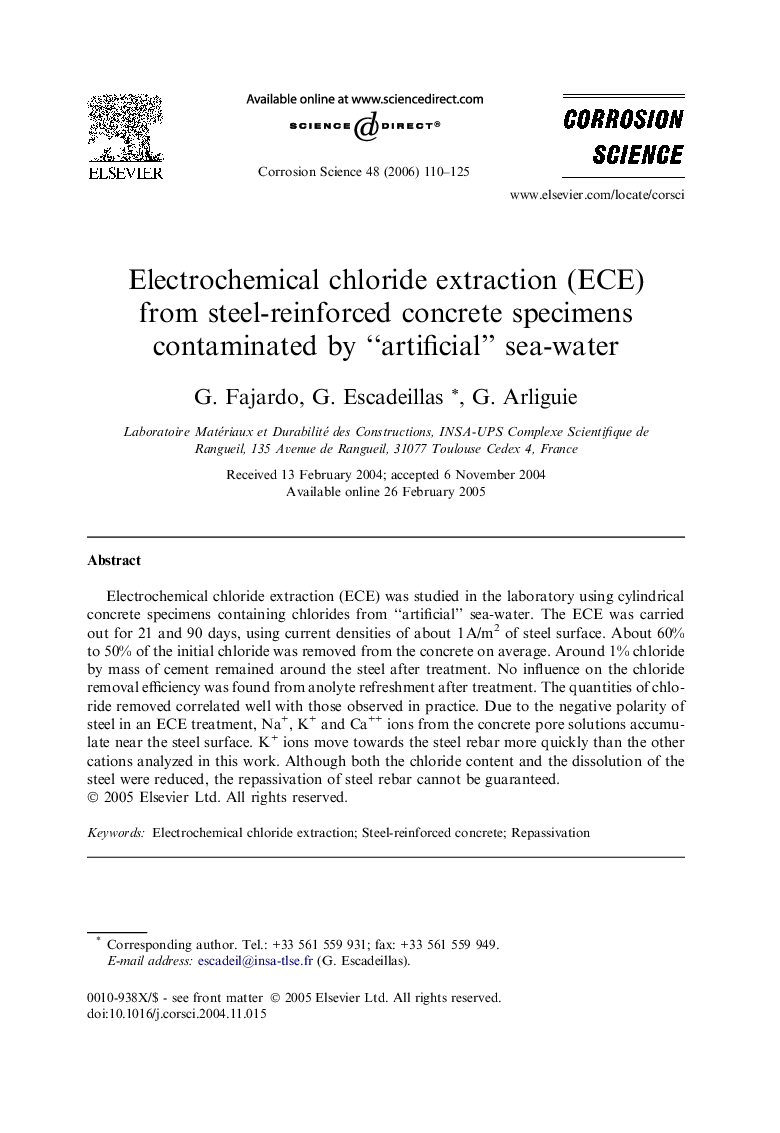| Article ID | Journal | Published Year | Pages | File Type |
|---|---|---|---|---|
| 1472032 | Corrosion Science | 2006 | 16 Pages |
Electrochemical chloride extraction (ECE) was studied in the laboratory using cylindrical concrete specimens containing chlorides from “artificial” sea-water. The ECE was carried out for 21 and 90 days, using current densities of about 1 A/m2 of steel surface. About 60% to 50% of the initial chloride was removed from the concrete on average. Around 1% chloride by mass of cement remained around the steel after treatment. No influence on the chloride removal efficiency was found from anolyte refreshment after treatment. The quantities of chloride removed correlated well with those observed in practice. Due to the negative polarity of steel in an ECE treatment, Na+, K+ and Ca++ ions from the concrete pore solutions accumulate near the steel surface. K+ ions move towards the steel rebar more quickly than the other cations analyzed in this work. Although both the chloride content and the dissolution of the steel were reduced, the repassivation of steel rebar cannot be guaranteed.
